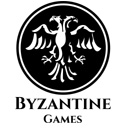Okay, maybe this is just me having the problem, but why in the world were the same color schemes used for the units of both sides? My cavalry are blue, enemy cavalry are blue. My infantry are red, enemy infantry is also red. Does no one notice the problem that this causes in recognizing at a glance which units are yours and which aren't?
Yes there are the flags, but when zoomed out, these are often not particularly visible, especially depending on the angle. Also, early on when lines are clear, it's not an issue, but once things get confused with units facing every which way, it is nearly impossible to easily recognise where your units are, especially during combat resolution, and with routing units.
Wouldn't it be simple enough to make one side's infantry & cavalry light blue/dark blue, and the other light red/dark red? This makes so much more sense.
Great game otherwise, but this just seems so counter-intuitive...
Unit differentiation?
Moderators: rbodleyscott, Slitherine Core, Gothic Labs
-
thedudeabidez
- Administrative Corporal - SdKfz 251/1

- Posts: 125
- Joined: Tue Dec 23, 2014 2:57 pm
Re: Unit differentiation?
It is a problem. But I look at the floating Icon more than the uniform color and got used to it. I am not talking about the little fluttering flags attached to the units. There is a floating flag that represents a side and becomes torn as the unit suffers casualties. It also shows that disrupted / fragmented status.
No doubt that there were units that wore uniform during the time, but it is not uncommon for soldiers to just wear whatever they can find in their wardrobe. Opponents could be wearing the same color. Mercenaries are also common so they wont wear the same stuff as the Nation that hired them. Also there are regional allies, vassals, etc. fighting on one side whose mode of dress might be different. It would be counter productive for the devs to take this into account when painting the units. So generic clothing is implemented. Of course downside is that you will see similar colors (french blue vs Swedish blue). But that is how the war was fought and why flags are important.
No doubt that there were units that wore uniform during the time, but it is not uncommon for soldiers to just wear whatever they can find in their wardrobe. Opponents could be wearing the same color. Mercenaries are also common so they wont wear the same stuff as the Nation that hired them. Also there are regional allies, vassals, etc. fighting on one side whose mode of dress might be different. It would be counter productive for the devs to take this into account when painting the units. So generic clothing is implemented. Of course downside is that you will see similar colors (french blue vs Swedish blue). But that is how the war was fought and why flags are important.
Re: Unit differentiation?
Personally I'd like to see more variation in the coat colours of P&S armies. The 16th century Swiss and Landsknechts went in for all kinds of finery and Thirty Years War armies tended to get scruffier and scruffier as time went on and money ran out until by the 1640s pretty much everyone but the French (who were newcomers to the war so hadn't run out of money yet) was pretty much dressed in worn out patched rags.
Re: Unit differentiation?
One thing that I would like is a way to the colors in a skirmish. Say you wanted to have France versus France so it was all a question of generalship. The flags aren't going to help you then. I think it would be nice to be able to reverse the colors in such a situation.
-
rbodleyscott
- Field of Glory 2

- Posts: 28282
- Joined: Sun Dec 04, 2005 6:25 pm
Re: Unit differentiation?
Good scope for some modding!TimW wrote:Personally I'd like to see more variation in the coat colours of P&S armies. The 16th century Swiss and Landsknechts went in for all kinds of finery and Thirty Years War armies tended to get scruffier and scruffier as time went on and money ran out until by the 1640s pretty much everyone but the French (who were newcomers to the war so hadn't run out of money yet) was pretty much dressed in worn out patched rags.
Richard Bodley Scott










